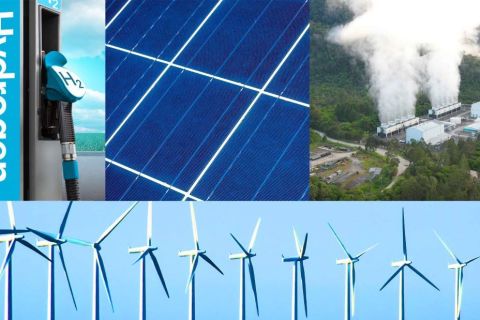
The advantage of an annual conference, like the 2017 Marcellus-Utica Midstream Conference & Exhibition Jan. 24-26 in Pittsburgh, is that it puts price movements in perspective.
- The ethane crackers are on their way;
- Executive orders by the president are clearing the way for construction of two major pipeline projects that had been waylaid; and
- The massive resources of the Marcellus and Utica shales resemble those of Qatar.
 That puts the price of ethane—which has tumbled 31% at Mont Belvieu, La., and 30% at Conway, Kan., in the past month—easier to take because the ethane crackers, i.e., demand, are still on their way. And Denise Brinley of Pennsylvania’s Department of Community & Economic Development Executive Office told conference attendees on Jan. 26 that the commonwealth’s ethane production could support as many as four new crackers.
That puts the price of ethane—which has tumbled 31% at Mont Belvieu, La., and 30% at Conway, Kan., in the past month—easier to take because the ethane crackers, i.e., demand, are still on their way. And Denise Brinley of Pennsylvania’s Department of Community & Economic Development Executive Office told conference attendees on Jan. 26 that the commonwealth’s ethane production could support as many as four new crackers.
While ethane’s slump dragged down the price of the hypothetical NGL barrel at both hubs, propane and the butanes experienced increases and C5+ remained above $1 per gallon (gal), as it has with a single exception since September.
The barrel dipped but was still above $27 for the fifth straight week, the longest it has remained in that territory at both hubs in 26 months. While the average price of natural gas over the five-day recording period gave up 3% over last week, it’s important to note trends. The price rose sharply on Jan. 24, which happened to be the eve of the Pittsburgh conference (some refer to that kind of price movement as the “Marcellus-Utica Midstream conference effect.”)
Propane rose just under 4% at both hubs to reach levels not seen since November 2014. The low point for propane was one year ago, meaning that the price is now 142% higher at Mont Belvieu and 152% higher at Conway.
 Conway’s butane price of almost $1.19/gal was its highest since October 2014, while Mont Belvieu’s price rose past $1/gal for the fourth time in five weeks for the first time since November 2014.
Conway’s butane price of almost $1.19/gal was its highest since October 2014, while Mont Belvieu’s price rose past $1/gal for the fourth time in five weeks for the first time since November 2014.
Isobutane also rose by 3% at both hubs, with Conway’s price hitting its highest level in 26 months and maintaining a six-week streak above $1/gal.
Storage of natural gas in the Lower 48 declined by 119 billion cubic feet (Bcf) in the week ended Jan. 20, the U.S. Energy Information Administration reported. The decrease, which matched the Bloomberg consensus, resulted in a total of 2.798 Tcf. The figure is 11.1% less than the 3.146 Tcf figure at the same time in 2016, and 0.7% below the five-year average of 2.818 Tcf.
Joseph Markman can be reached at jmarkman@hartenergy.com and @JHMarkman.

Recommended Reading
Amazon, Dominion Energy Form Small Modular Reactor Pact
2024-10-17 - Dominion Energy and Amazon’s agreement to advance nuclear development was one of several moves made by Big Tech lately to advance lower carbon energy technologies.
Belcher: The Growing Nexus of Nuclear, Oil and Gas
2024-11-07 - Nuclear has a capacity factor of 92.5%, the highest of any source of electricity, not to mention near-zero greenhouse gas emissions.
EQT’s Rice: Three Mile Island Restart Not ‘Needle-Mover’ vs. Natgas
2024-09-25 - Microsoft Corp. will pay as much as $130 per megawatt-hour for the resurrected plant’s electricity that will carry a “carbon-free” label and a new name: Crane Clean Energy Center.
Brookfield Targets More Renewable Power Growth Opportunities
2024-09-11 - Brookfield Asset Management agreed to invest up to $1.1 billion in efuels producer Infinium as it seeks additional growth opportunities.
Energy Transition in Motion (Week of Sept. 27, 2024)
2024-09-27 - Here is a look at some of this week’s renewable energy news, including a commitment of more than $116 billion annually in renewables and grids.
Comments
Add new comment
This conversation is moderated according to Hart Energy community rules. Please read the rules before joining the discussion. If you’re experiencing any technical problems, please contact our customer care team.






